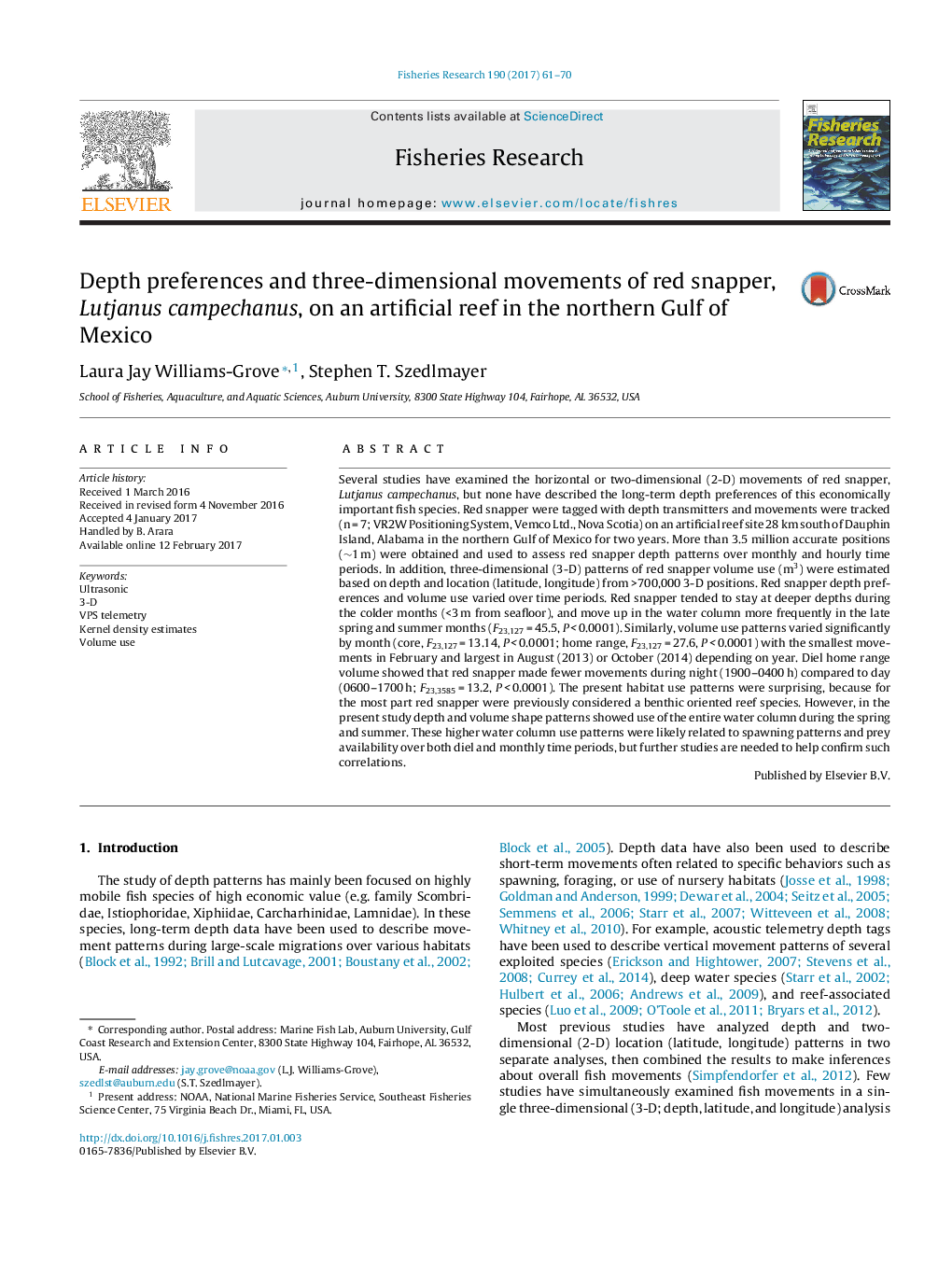| Article ID | Journal | Published Year | Pages | File Type |
|---|---|---|---|---|
| 5765544 | Fisheries Research | 2017 | 10 Pages |
Several studies have examined the horizontal or two-dimensional (2-D) movements of red snapper, Lutjanus campechanus, but none have described the long-term depth preferences of this economically important fish species. Red snapper were tagged with depth transmitters and movements were tracked (n = 7; VR2W Positioning System, Vemco Ltd., Nova Scotia) on an artificial reef site 28 km south of Dauphin Island, Alabama in the northern Gulf of Mexico for two years. More than 3.5 million accurate positions (â¼1 m) were obtained and used to assess red snapper depth patterns over monthly and hourly time periods. In addition, three-dimensional (3-D) patterns of red snapper volume use (m3) were estimated based on depth and location (latitude, longitude) from >700,000 3-D positions. Red snapper depth preferences and volume use varied over time periods. Red snapper tended to stay at deeper depths during the colder months (<3 m from seafloor), and move up in the water column more frequently in the late spring and summer months (F23,127 = 45.5, P < 0.0001). Similarly, volume use patterns varied significantly by month (core, F23,127 = 13.14, P < 0.0001; home range, F23,127 = 27.6, P < 0.0001) with the smallest movements in February and largest in August (2013) or October (2014) depending on year. Diel home range volume showed that red snapper made fewer movements during night (1900-0400 h) compared to day (0600-1700 h; F23,3585 = 13.2, P < 0.0001). The present habitat use patterns were surprising, because for the most part red snapper were previously considered a benthic oriented reef species. However, in the present study depth and volume shape patterns showed use of the entire water column during the spring and summer. These higher water column use patterns were likely related to spawning patterns and prey availability over both diel and monthly time periods, but further studies are needed to help confirm such correlations.
